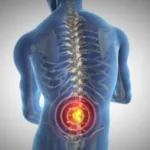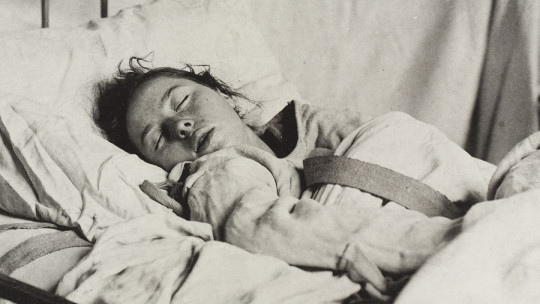
Somatoform disorders involve a series of physical symptoms that are not explained by any medical illness. Furthermore, they have the characteristic that there are a series of underlying psychological factors that are related to their onset, maintenance or exacerbation.
In this article we will learn about one of these disorders: pain disorder, in which the main symptom is intense and disabling pain. We will see what its characteristics, types, symptoms, causes and treatments are.
Pain disorder: what is it?
Pain disorder is a disorder belonging to the category of “somatoform disorders” of the DSM-IV-TR (APA, 2002). In the DSM-5 (APA, 2013), this category changes its name and is now called “somatic symptom disorders and related disorders.”
Besides, An important change to highlight is that the pain disorder disappears as such in this new edition of the DSM and becomes a specifier of somatic disorders.
Let’s see what somatoform (or somatoform) disorders are, such as pain disorder.
Somatoform disorders
Somatoform or somatoform disorders They encompass a group of mental disorders characterized by the appearance of a series of physical symptoms that are not explained by any medical condition ; However, these symptoms are related to psychological factors, such as traumatic events.
It is important to differentiate somatoform disorders, such as pain disorders, from psychosomatic disorders or diseases. The latter are organic pathologies or known and specific pathophysiological processes, where psychological and psychosocial factors are related to their onset or course.
Characteristics
Pain disorder, which is listed as a diagnosis in the DSM-IV-TR, was previously called “somatoform pain.” It was even called “chronic pain,” a term first used by Keefe in 1982.
Regarding its epidemiology, Pain disorder is the most prevalent of all somatoform disorders in the clinical context It appears more frequently in women than in men, especially as symptoms related to pain due to menstruation.
Symptoms
We are going to see the main symptoms of pain disorder, which in turn correspond to its diagnostic criteria.
1. Pain
As its name indicates, The main symptom of pain disorder is localized pain in one or more areas of the body This pain is severe enough to require specific clinical attention.
2. Discomfort
This pain causes significant discomfort in the patient This discomfort can also lead to a deterioration in the person’s life, and is also clinically relevant. That is, it is significant and cannot be reduced to a simple feeling of discomfort.
3. Psychological factors
Besides, The pain disorder is associated with a series of psychological factors that play a determining role in the pain itself ; That is, these factors significantly influence the onset, course, maintenance or worsening of the pain symptom.
It is worth mentioning that when pain appears associated with a medical illness, this could not be considered a mental disorder.
4. There is no simulation
Finally, the patient does not simulate this pain in any way, nor does it produce it intentionally. This feature would differentiate it from simulation.
Guys
In the DSM-IV-TR it is necessary to code the type of pain disorder that the patient manifests, which can be of two types.
1. Pain disorder associated with psychological factors
In this case, there are a series of psychological factors (for example, anxiety experienced due to stressful life events, traumatic experiences, nervousness, etc.) that explain why the pain symptom began, why it was exacerbated or why it remains in the state. time.
That is, these factors have a relevant role in the appearance, maintenance and/or worsening of pain.
2. Pain disorder associated with psychological factors and medical illness
In this second type of pain disorder, in addition to the psychological factors mentioned, there is also an underlying medical illness; although, we emphasize, these psychological factors must always exist, necessarily.
This subtype is more common than the previous one.
Specifiers
On the other hand, in the DSM-IV-TR it is also necessary to specify whether the pain disorder is acute or chronic.
1. Acute
Acute pain disorder lasts less than 6 months.
2. Chronic
In the case of diagnosing a chronic pain disorder, its duration is equal to or greater than 6 months.
It is worth noting that in the WHO classification (ICD-10, International Classification of Diseases), there is also a diagnosis of pain disorder, and that in this classification the persistence of the pain symptom is at least 6 months (a requirement that is not has the DSM-IV-TR).
Causes
The causes of the pain disorder, as we have seen, are associated exclusively with psychological factors (which are usually stressful for the person), or with psychological factors together with some type of medical illness that the patient suffers from. Psychological factors include stressful or traumatic events for the patient, a fast pace of life that causes anxiety, poorly managed grief, the death of a loved one, etc.
But remember, the pain of pain disorder can never be explained exclusively by a medical illness because then we would not be talking about this diagnosis or a mental disorder.
Treatment
The treatment of pain disorder will include a psychological intervention aimed at treating the underlying causes of pain ; In this case, the psychological factors that explain the pain symptoms. So the therapy must be personalized for each patient and adapted to each specific case, since the factors will always vary from one case to another.
Cognitive-behavioral techniques, some type of systemic, humanistic therapy, etc. can be used. The theoretical orientation of the therapy will depend on the characteristics, needs and preferences of the patient.
On the other hand, anxiolytics and/or antidepressants have also been used to complement psychological intervention, but these should always be considered as specific and supportive “tools.”
Other somatoform disorders
In addition to pain disorder, in the DSM-IV-TR we find other disorders belonging to the same category of somatoform disorders.
These are: somatization disorder (which also disappears in the DSM-5), undifferentiated somatoform disorder, hypochondria (which in the DSM-5 becomes a more global category, “illness anxiety disorder”), body dysmorphic disorder (which in the DSM-5 becomes part of obsessive-compulsive disorders) and conversion disorder.
The latter can be of four types: with motor symptoms or deficits, with seizures and convulsions, with sensory symptoms or deficits, and mixed presentation.
Furthermore, within somatoform disorders we also find somatoform disorder not otherwise specified (different from undifferentiated somatoform disorder).








